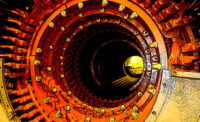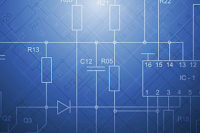The ability of engine-powered generators to start and supply standby power of acceptable frequency and voltage within 10 seconds of a utility outage has made these generators the standby power system of choice for a wide variety of facilities including mission critical. However, the rules defining these starting requirements are complex and often dependent on the specific standby power application. This has led to uncertainty in the industry regarding what is included in those crucial 10 seconds. Following are the details that system designers and consulting engineers need to know about the NFPA 110 (and the related NFPA 70) and how it applies to emergency standby generator applications.
NFPA 110 defines performance requirements for emergency and standby power systems that provide an alternate source of electrical power to facility loads in the event that the primary power source fails. As part of these requirements, standby power resources are also segmented by “type” (see Table 4.1b). The type refers to the maximum time, in seconds, that the Emergency Power Supply System (EPSS) will permit the load terminals of the transfer switch to be without acceptable electrical power. For example, an EPSS designated as Type 10 will not permit the load terminals of the transfer switch to be without acceptable power for more than 10 seconds.
In many applications, an EPSS is mandated by local codes and regulations in order to support life-safety requirements. In addition, it is not uncommon for many jurisdictions to adopt the National Electric Code (NEC) as the local electrical code. The NEC requires that, in the event of a failure of the normal power supply, emergency power shall be available within the time required for the application, but not to exceed 10 seconds. Basically, this means that systems determined to be essential for safety to human life are assigned as Type 10 under NFPA 110.
Unfortunately, there has been some confusion in the industry about the requirements of the 10 second start, such as what actually is included in those critical 10 seconds and when the clock technically starts and stops for compliance.
History of NFPA 110
While the National Fire Protection Agency was established in 1896, the Technical Committee responsible for setting standards for EPSS was not formed until 1976. The first comprehensive standard that covered the application and operation of EPSS was published in 1985 as NFPA 110. Since then, the standard has undergone numerous revisions, with input from industry technical experts representing manufacturers, installers, and endusers.
NFPA 110 is currently on a three-year review cycle, with the most current published revision being released as the 2013 edition. It is important to note that significant changes occur year to year; as such, the particular edition that local jurisdictions reference in their own codes may not be the most current revision. In these cases, the previous edition should be reviewed for compliance to the project in question. Copies of the NFPA 110 standard, as well as other offerings from NFPA, are available directly from the organization.
NFPA 110 and generator sets
NFPA 110 references EPSS throughout the standard and often does not differentiate between the performance requirements of the various standby power options that facility designers may provide. One such section is the classification of the EPSS found in chapter 4 of the 2013 edition. Specifically, this section addresses the terminology used to define different applications.
NFPA 110 Standard for Emergency and Standby Power Systems
The relevant passage and table:
4.1 General. The EPSS shall provide a source of electrical power of required capacity, reliability, and quality to loads for a length of time as specified in Table 4.1(a) and within a specified time following loss or failure of the normal power supply as specified in Table 4.1(b).
Class Minimum Time
Class 0.083 0.083 hr (5 min)
Class 0.25 0.25 hr (15 min)
Class 2 2 hr
Class 6 6 hr
Class 48 48 hr
Class X
Other time, in hours, as required by the
application, code, or user.
Table 4.1(a)
Designation Power Restoration
Type U
Basically uninterruptible (UPS systems)
Type 10 10 sec
Type 60 60 sec
Type 120 120 sec
Type M
Manual stationary or nonautomatic —
no time limit.
Table 4.1(b)
As shown in Table 4.1(a), the class defines the required run time capability, while the type listed in Table 4.1(b) dictates the allowable time between a loss of utility power and the restoration of acceptable power to the facilities’ loads. Because the class determination is self-explanatory, the remainder of this article will focus on the type requirements and what it means for equipment manufacturers, consulting engineers, and the applications where these products are installed.
EPSS Type Designation
The NFPA 110 defines the types of Level I and Level II EPSSs, but it uses other application codes to define when a specific type, class, and level power system is needed. For example, NFPA 70, otherwise known as the National Electrical Code (NEC), focuses article 700 on emergency systems. Two sections of article 700 specifically address the types of loads and the time required for power restoration.
NFPA 70 National Electrical Code
700.2 Definitions
Emergency Systems: Those systems legally required and classed as emergency by municipal, state, federal, or other codes, or by any governmental agency having jurisdiction. These systems are intended to automatically supply illumination, power or both, to designated areas and equipment in the event of failure of the normal supply or in the event of accident to elements of a system intended to supply, distribute, and control power and illumination essential for safety to human life.
700.12 General Requirements
Current supply shall be such that, in the event of a failure of the normal power supply, emergency lighting, emergency power, or both shall be available within the time required for the application, but not to exceed 10 seconds.
As defined above, the NEC clearly states that power and lighting loads which are essential for life safety must be restored within 10 seconds; therefore, these types of loads within a facility are Type 10. In addition, NFPA 99, the healthcare facilities code, repeats this requirement under section 6.4 for essential electrical system requirements. The healthcare facilities code classifies essential electrical system power sources as Type 10, Class X under NFPA 110.
Key takeaways for power system design
With the above summary of applicable NFPA 110 and NFPA 70 (NEC) requirements complete, what does it all mean for system designers and consulting specifying engineers in regard to starting requirements for standby power systems? Here are the three key takeaways to keep in mind.
Key takeaway #1
Systems determined to be essential for safety to human life are assigned as Type 10 under NFPA 110.
The “10” Second Start
Provide a source of electrical power of required capacity, reliability, and quality to loads within 10 seconds following loss or failure of the normal power supply. This is the language of NFPA 110 section 4.1 as it applies to life-safety loads. It also delineates the two major components of the standard: time and load.
Let’s examine the time aspect first. In most applications for standby power, the life safety loads will be backed up by an engine-driven generator. In order to prevent the standby power system from starting in the event of brief nuisance outages or momentary voltage dips, NFPA 110 requires a delay in the starting signal to the unit.
6.2.5 Time Delay on Starting of EPS. A time-delay device shall be provided to delay starting of the EPS. The timer shall prevent nuisance starting of the EPS and possible subsequent load transfer in the event of harmless momentary power dips and interruptions of the primary source.
8.4.5. Time delays shall be set as follows:
(1) Time delay on start:
(a) 1-sec minimum
(b) 0.5-sec minimum for gas turbine units
(2) Time delay on transfer to emergency: no minimum required
(3) Time delay on restoration to normal: 5-min minimum
(4) Time delay on shutdown: 5-min minimum
The one-second minimum delay must be accounted for when generator set manufacturers evaluate the performance of their products with regard to NFPA 110 Type 10. In effect, this leaves only nine seconds for the generator to start and provide adequate power to the life-safety systems connected to the load side of the transfer switch. This is inclusive of the signal detection and ATS transfer time, which can reasonably be assumed to be about 0.5 seconds.
It should be noted that there is a required minimum ambient temperature of 40?F for level-one installations utilizing rotating equipment. This ambient temperature allows generator set manufacturers to accurately plan for the required amount of engine block heating that will be needed to allow large engines to come up to speed in the required time. The minimum allowable temperature also limits the exposure of starting batteries to cold conditions, which may impact starting performance and life expectancy.
Key takeaway #2
The generator set starting sequence includes a one-second minimum time delay, followed by no more than nine seconds during which the generator must start, come up to speed, and connect through the transfer switch to the load with acceptable electric power.
Acceptable power
NFPA 110 references that the power must be of acceptable quality within the starting time limitation. The transfer switch itself has the control capability to recognize an acceptable power source and connect loads to it, hence the name “automatic” transfer switch. The voltage and frequency pick-up settings in most industrial transfer switches can be adjusted to best suit each installation (typically 90% voltage and 90% frequency). While the pick-up settings can be adjusted for each application, the published NFPA 110 Type 10 compliance is based on the typical pick-up settings for voltage and frequency. While manufacturers can design their equipment to start and energize within the required time, the subsequent voltage and frequency dip upon connection will depend on the application.
Another point to consider is the amount of time the EPSS will require to recover from the voltage and frequency excursions when first connected to the emergency loads by the transfer switch. This will depend on the characteristics of the connected loads and the capacity of the EPSS to support those loads. Selection of the proper EPSS is required to ensure that load-protective devices will not disconnect the loads. In addition, it is important to understand that this recovery time is not included in the 10-second start requirement.
Key takeaway #3
Power is deemed as “acceptable” so long as it falls within the acceptable load pick-up parameters of the transfer device and it does not cause the load’s protective functions to disconnect it from the EPSS.
What to look for
With clarification brought to the two key components for developing a Type 10 compliant system — time and power quality — how does one go about specifying an EPSS that complies with the NFPA 110 requirement? There is a critical evaluation criterion for each of the requirements. In order to ensure the generator set will actually meet the 10-second start requirement, it is important to verify that the generator set is capable of meeting the requirements as detailed by NFPA 110. A statement of compliance can typically be found on the manufacturer’s specification sheet, referenced under a common section with other industry code-compliance and certification information.
Summary
NFPA 110 Type 10 encompasses three key aspects that relate to the applicability of the requirement, what is actually required to occur during those 10 seconds, and what qualifies as acceptable power to the load. At the end of the day, both manufacturers and system owners are seeking a common goal: restoring power as quickly as possible to loads that need it the most. However, since there are variations in every application, compliance with the requirements of NFPA 110 serves as a common ground that allows manufacturers to test and certify their equipment while providing peace of mind to facility owners.




